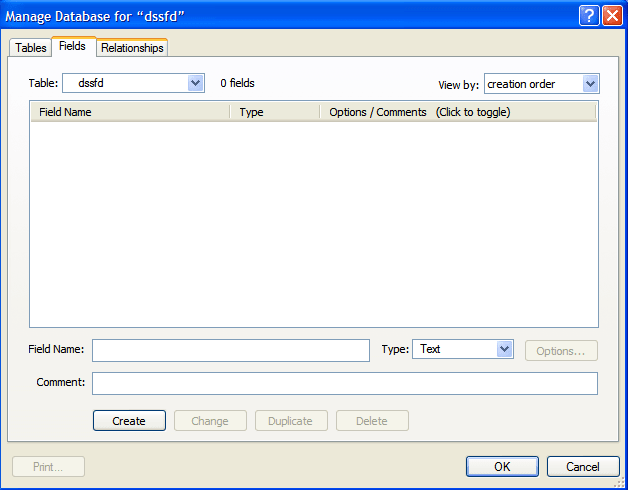FileMaker 17 Mac torrent mac is the world’s best software for creating apps for Windows, Mac, Linux, iPad, and others just like a professional. FileMaker Pro 17 Advanced with serial number is one of the best tools to handle databases and share it with a team over a.Picktorrent: filemaker pro 11 - Free Search and Download Torrents at search engine.

17 / May 15, 2018; 9 months ago ( 2018-05-15),,,,, Website FileMaker Pro is a cross-platform application from, a of It integrates a with a graphical user interface () and security features, allowing users to modify the database by dragging new elements into layouts, screens, or forms. Current versions are: FileMaker Pro Advanced 17, FileMaker Server 17, FileMaker Cloud 1.17, and FileMaker Go 17 for. FileMaker Pro evolved from a application, but was then developed primarily for the and released in April 1985. Since 1992 it has been available for and for the and, and can be used in a cross-platform environment. FileMaker server briefly ran on, but Linux support was abandoned with FileMaker 7, thereafter only running on Windows or macOS servers. A client version was released for devices in July 2010. It is available in,, iOS and -delivery configurations.
In 2016, FileMaker Cloud was introduced, including a Linux server (), which was offered exclusively through the. Contents • • • • • • • • • • • • History [ ] FileMaker Pro began as an -based named Nutshell – developed by Nashoba Systems of, in the early 1980s. Nutshell was distributed by, an electronics marketer that had recently started selling -compatible computers.
With the introduction of the Macintosh, Nashoba combined the basic data engine with a new forms-based (GUI). Leading Edge was not interested in newer versions, preferring to remain a DOS-only vendor, and kept the Nutshell name. Nashoba found another distributor,, and introduced the program on the Macintosh platform as FileMaker.
When Apple introduced the in 1986 the next version of FileMaker was named FileMaker Plus to reflect the new model's name. Forethought was purchased by, which was then introducing their product that became part of. Microsoft had introduced its own database application, Microsoft File, shortly before FileMaker, but was outsold by FileMaker and therefore Microsoft File was discontinued. Microsoft negotiated with Nashoba for the right to publish FileMaker, but Nashoba decided to self-publish the next version, FileMaker 4.
Purchase by Claris [ ] Shortly thereafter, Apple Computer formed, a wholly owned subsidiary, to market software. Claris purchased Nashoba to round out its software suite.

By then, Leading Edge and Nutshell had faded from the marketplace because of competition from other DOS- and later Windows-platform database products. FileMaker, however, continued to succeed on the Macintosh platform. Claris changed the product's name to FileMaker II to conform to its naming scheme for other products, such as MacWrite II, but the product changed little from the last Nashoba version. Several minor versions followed; it was succeeded by FileMaker Pro 1.0 in 1990. In September 1992, Claris released a cross-platform version for both the Mac and Windows; except for a few platform-specific functions, the program's features and user interface were the same. Up to this point FileMaker had no real relational capabilities; it was limited to automatically looking up and importing values from other files.
Aksen fort tabletki. It only had the ability to save a state—a filter and a sort, and a layout for the data. Version 3.0, released around 1995, introduced new relational and scripting features. By 1995 FileMaker Pro was the only strong-selling product in Claris's lineup.
In 1998, Apple moved development of some of the other Claris products in-house, dropped most of the rest, and changed Claris's name to FileMaker, Inc., to concentrate on that product. Later updates [ ] Version 4.0, introduced in 1997, added a plug-in architecture much like that of, which enabled third-party developers to add features to FileMaker. A bundled plug-in, the Web Companion, allowed the database to act as a web server. Other 'plugs' added features to the interface and enabled FileMaker to serve as an client, perform external file operations, and send messages to remote FileMaker files over the or an. Version 7, released in 2004, introduced a new file format (file extension.fp7) supporting file sizes up to 8 terabytes (an increase from the 2 gigabytes in previous versions).
Individual fields could hold up to 4 gigabytes of binary data (container fields) or 2 gigabytes of 2-byte text per record (up from 64 kilobytes in previous versions). FileMaker's relational model was enriched, offering multiple tables per file and a graphical relationship editor that displayed and allowed manipulation of related tables in a manner that resembled the format. Accompanying these foundational changes, FileMaker Inc. Also introduced a developer certification program. In 2005 FileMaker Inc.